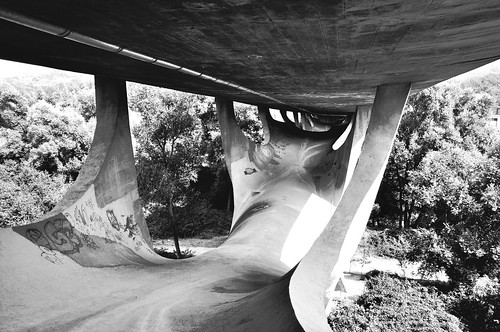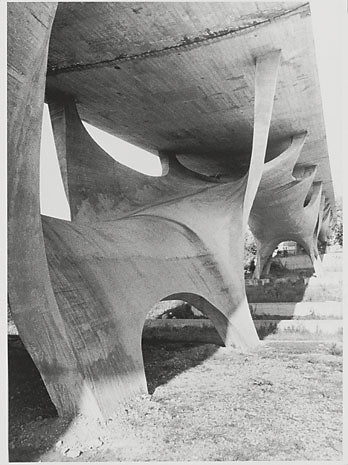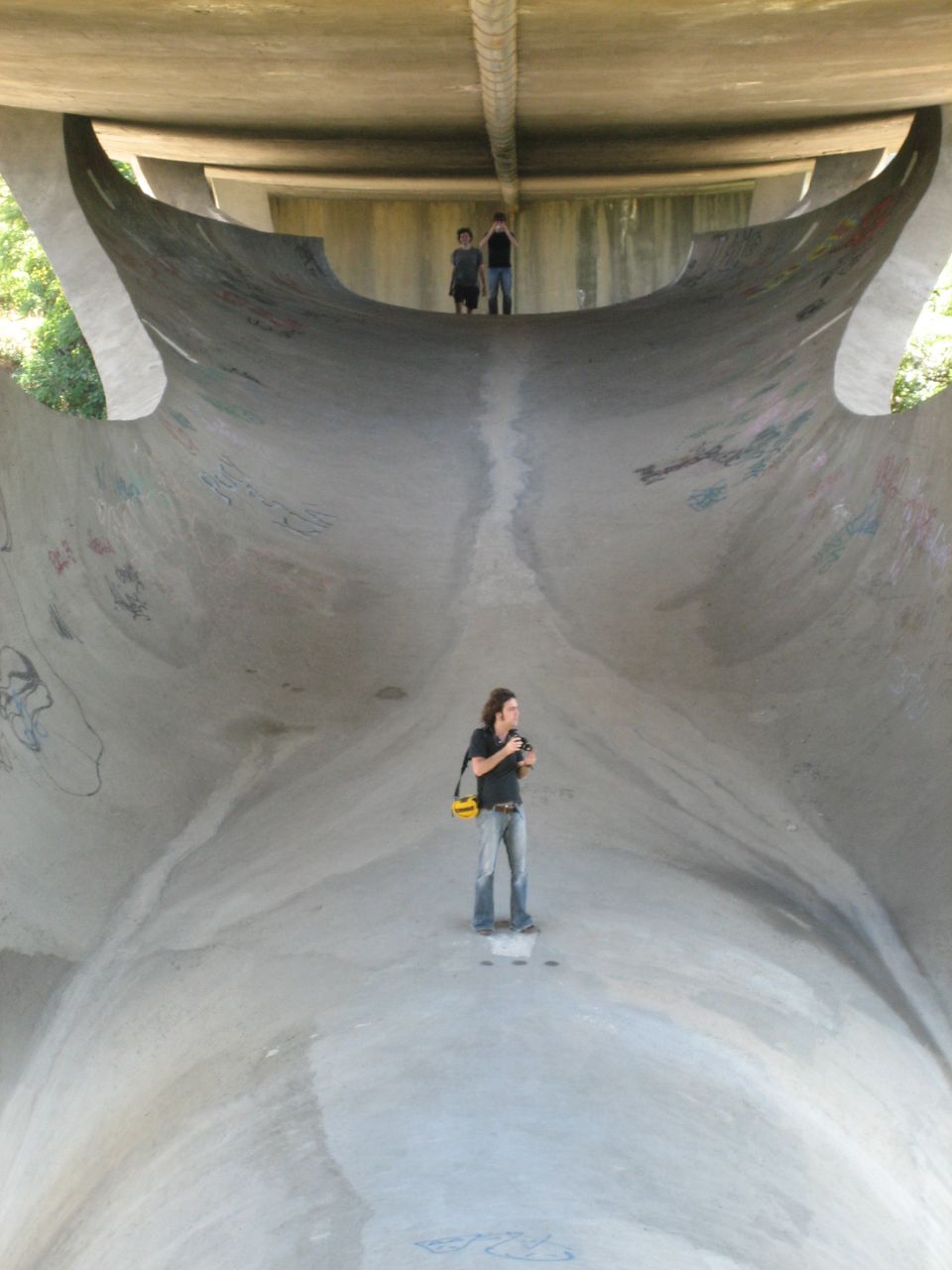While at the library at the RDAFA and browsing Paolo Portoghesi's book Nature and Architecture, I bumbed into a picture of the Basento viaduct in Potenza, Italy, by Italian structural engineer Sergio Musmeci (1926-81) whom I had never heard of - shame on me
Portoghesi's book is full of references and comparisons between natural and built structures - the image of the bridge (1967-69) really caught my attention because of its striking sculptural and modern appearance and obvious organic, efficient-looking design.
"Graduated in Rome with a degree in Civil Engineering (1948) and Aeronautical Engineering (1953), Sergio Musmeci (Rome, 1926-1981) is considered one of the most daring structural engineers of the 20th century. The years of his training in the offices of Riccardo Morandi and Pier Luigi Nervi had a significant influence on his work and personal interests; in 1953 he began working with Zenaide Zanini, a collaboration that would last the rest of his life. Professor at the Faculty of Architecture in Rome, he is the author of scientific publications on structures with minimum absolute weight and other topics related to the investigation of forms derived from incomplete structural solutions."
From the biography on the The Sergio Musmeci and Zenaide Zanini Archive at MAXXI_National museum of 21st century arts, Rome web page:

[Image of a neoprene model of the Basento bridge by Sergio Musmeci]
[Image of the structural principles for the bridge]
Bloggers at core.form-ula write: "Sergio Musmeci’s very cultured and refined activity is the answer to those who believe that the studies concerning the relationship between architecture and mathematics are much too theoretical. Musmeci is one of the most daring and transgress engineers born in the twentieth century; he was master equally of music, astronomy, aeronautics, mathematics, and philosophy, all of which informed his structures, whose shape was determined by the spatial distribution of static actions. Musmeci thought that he could reach the expression of “modernity” through science. He is the designer of a project for the bridge on the Strait of Messina that has been only recently understood and appreciated, more than twenty years after its conception."
[I think this must be a sketch of the bridge over the Strait of Messina: a single-span bridge with an unsupported length of 3 km]
Below are a number of images of the bridge in Potenza and it's design. I'll have to dig a bit into the work of this fellow - hopefully more to come!
[Image of railroad tracks under the bridge - I wouldn't mind experiencing the bridge sitting in a train going through in the Italian countryside... ]
[Image of random guy with camera on - or in the bridge structure - just for scale]















